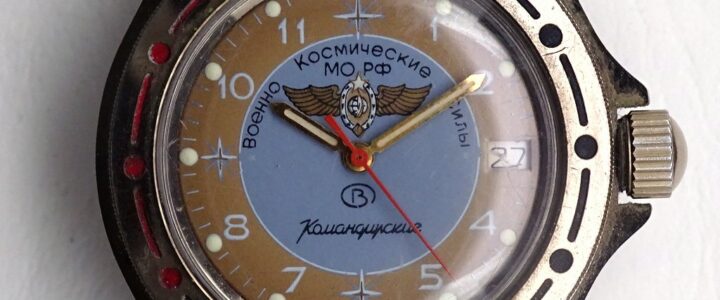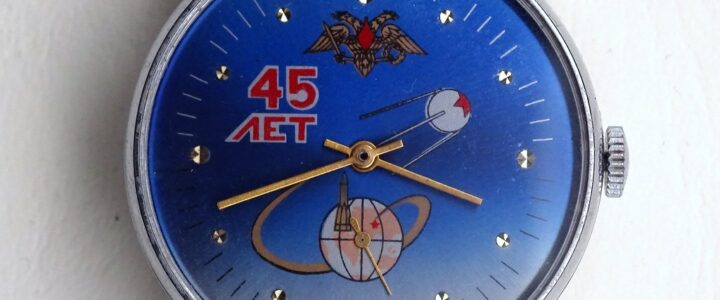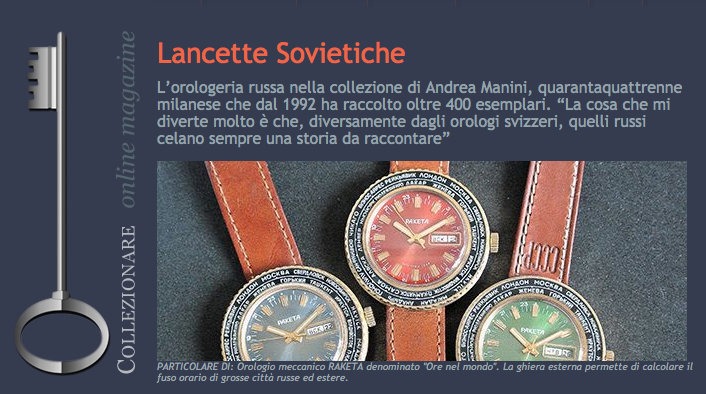This watch belongs to the sub-collection dedicated to space, specifically the Russian Space Military Forces. It was acquired through a less competitive auction on eBay.de and was delivered this morning via Deutsche Post. The description provided was inadequate, resulting in the watch not appearing in regular searches conducted by collectors.
THE VOSTOK RUSSIAN SPACE MILITARY FORCES WATCH
Brand: VOSTOK – KOMANDIRSKIE
Category: SPACE – MILITARY
Movement: AUTOMATIC MECHANICAL
Availability: RARE
DIAL
The dial is the most captivating aspect of the watch, featuring a complex and visually engaging design. It can be divided into two distinct concentric parts, both circular in shape.
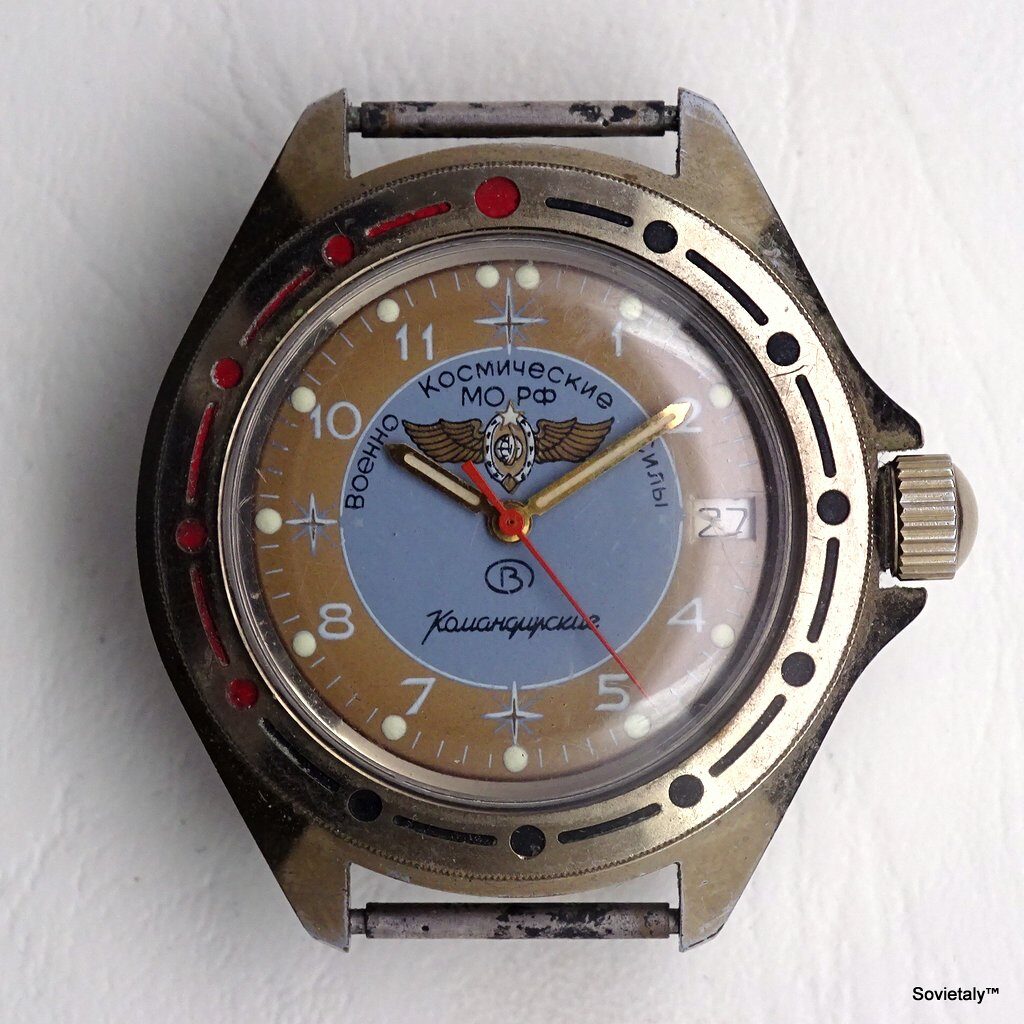
Outer Part:
The outer part of the dial is light brown in color, showcasing white Arabic numeral indices, excluding the number 3 to accommodate the date window, as well as the numbers 6, 9, and 12. Instead of these indices, there is a white four-pointed star with a brown inner part. The star has the same height as the numerals.
Small minute indices are present, and the hour markers feature a yellow/green luminescent dot. Two luminescent dots are positioned at 12 o’clock.
The absence of any text suggests that it is a transitional era watch.
Inner Part:
The inner part of the dial has a sugar blue color and displays various pieces of information.
At the top, there is a Cyrillic inscription: Военно Космические Силы, which translates to “Military Space Forces.”
In the center, there are abbreviations: МО РФ, representing “Ministry of Defense of the Russian Federation.”
Immediately below, one of the winged emblems of the Aerospace Forces is depicted.
At the bottom, the Vostok symbol and the inscription “Komandirskie” can be found, although it should be noted that the case is clearly Generalskie.
The dial may have faded over time, as the central part of the emblem should be blue. It is likely that the outer part was originally closer to blue than brown in color.
No additional details are present on the dial.
HANDS
The hour and minute hands have a gold color and feature the classic shape found in Komandirskie watches. The luminescent material on the hands matches the yellow/green color on the dial.
The seconds hand is red and lacks a luminescent dot.
CASE AND CROWN
The case is of the 097XXX type, indicating a Generalskie case finished with TiN (Titanium Nitride).
The screw-down crown is also finished with TiN and has a domed outer part.
No notable features are present on the case.
BEZEL
The gold-colored bezel, also finished with TiN, complements the case. It is a standard bidirectional bezel with 5 red dots, one of which is larger, and the remaining 7 dots are black. The bezel does not click.
CASEBACK
The original caseback of the watch has been replaced with a transparent mineral glass one, making it impossible to determine the original caseback. It is likely that a standard caseback was initially in place.
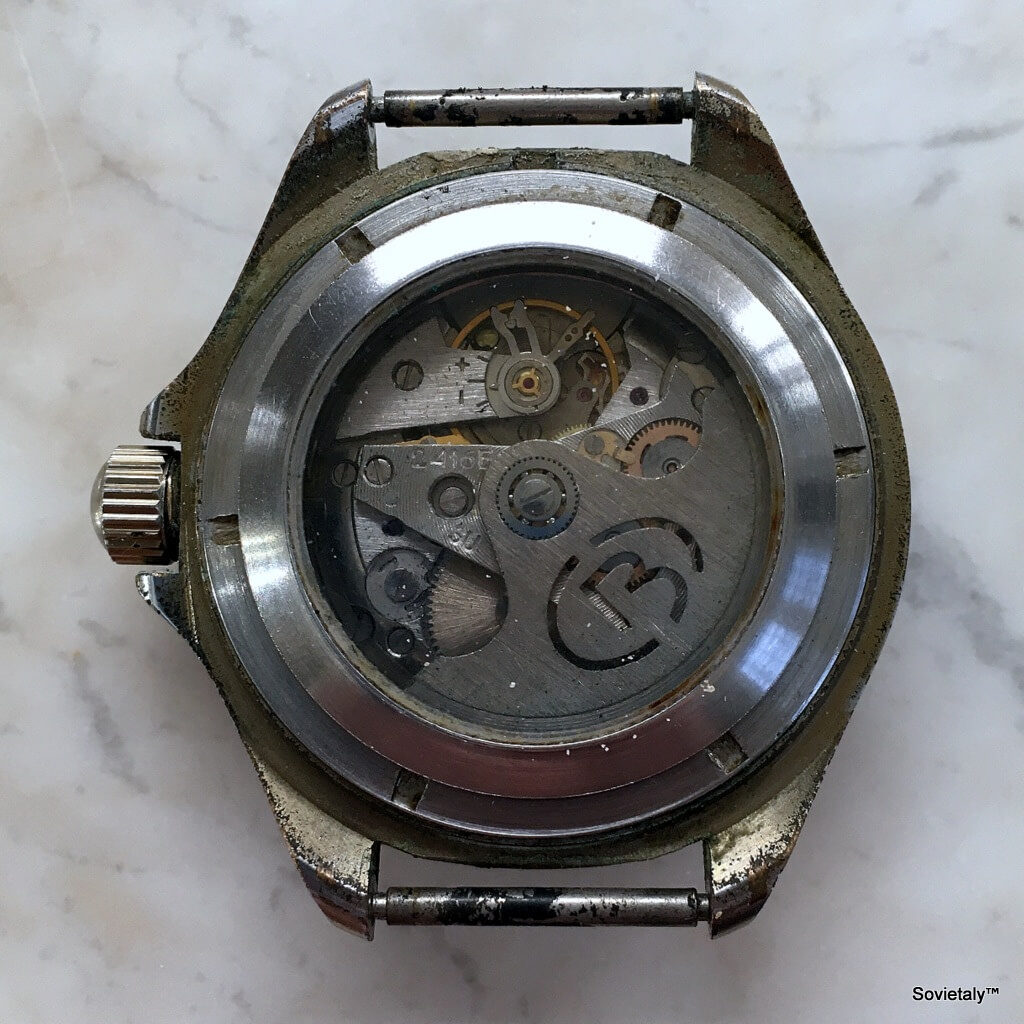
MOVEMENT
The watch is powered by a Vostok 2416Б automatic mechanical movement with manual winding capability.
The balance wheel features the Vostok symbol.
Jewels: 31 jewels
Frequency: 19,800 vibrations per hour
Power reserve: 40 hours
HISTORICAL NOTES ON THE RUSSIAN SPACE MILITARY FORCES
The Russian Space Military Forces (Russian: Космические войска: воздушно-кос
мические силы; transliterated: Vozdušno-Kosmičeskie Sily Rossii) constituted a branch of the armed forces of the Russian Federation responsible for military operations in space. The military command was based in Moscow.
Established on August 10, 1982, as a separate branch of the Soviet armed forces, the organization became part of the military forces of the newly formed Russian Federation on May 7, 1992. In 1997, the VKS (Vozdušno-Kosmičeskie Sily) were incorporated into the Strategic Missile Forces. In June 2001, they were officially reconstituted as an independent section of the Russian armed forces.
On August 1, 2015, the Space Military Forces merged with the Air Force, forming the Russian Aerospace Forces.
FUN FACTS ABOUT THE RUSSIAN SPACE MILITARY FORCES
The emblem of the Space Military Forces, which is displayed on the watch dial and is common among Soviet, Russian, and modern watches, is quite distinct. Finding credible information about it through regular search engines can be challenging. However, I discovered a credible discussion on a Russian antiquarian forum: https://forum.ww2.ru/index.php?showtopic=46257
In a post from 2007, a user reported the following:
Приложение к Приказу Министра обороны СССР 1989 г. №160
ОПИСАНИЕ нагрудного знака для классных специалистов из числа лиц офицерского состава, прапорщиков и мичманов, проходящих службу в соединениях, частях и учреждениях Управления начальника космических средств Министрерства обороны СССР.
Нагрудный знак представляет собой развернутые крылья золотистого цвета. В центре знака на фоне вселенной темно-синего цвета – изображение земного шара светло-голубого цвета. Земной шар опоясан золотистой орбитой спутника. Контур вселенной обрамлен лавровыми ветвями, на крайнюю часть которых наложена пятиконечная звезда, покрытая красной эмалью, на нижнюю часть – ромб, в центре которого соответственно классу расположены цифры – 1, 2, 3 или буква “М”, покрытые белой эмалью.
“Appendix to the Order of the Minister of Defense of the USSR 1989 No. 160
DESCRIPTION of the breast badge for class specialists among the officers, warrant officers, and midshipmen serving in the units, units, and institutions of the Office of the Chief of Space Forces of the Ministry of Defense of the USSR.
The breast badge is an extended wing of golden color. In the center of the badge, against the background of the universe of dark blue color, there is an image of a light blue globe. The globe is surrounded by a golden satellite orbit. The contour of the universe is framed by laurel branches, on the outer part of which a five-pointed star covered with red enamel is superimposed, and on the lower part, there is a diamond, in the center of which, depending on the class, numbers – 1, 2, 3, or the letter “M” covered with white enamel are located.”
COLLECTION
This watch is an appropriate addition to sub-collections featuring watches with both space and military themes.

